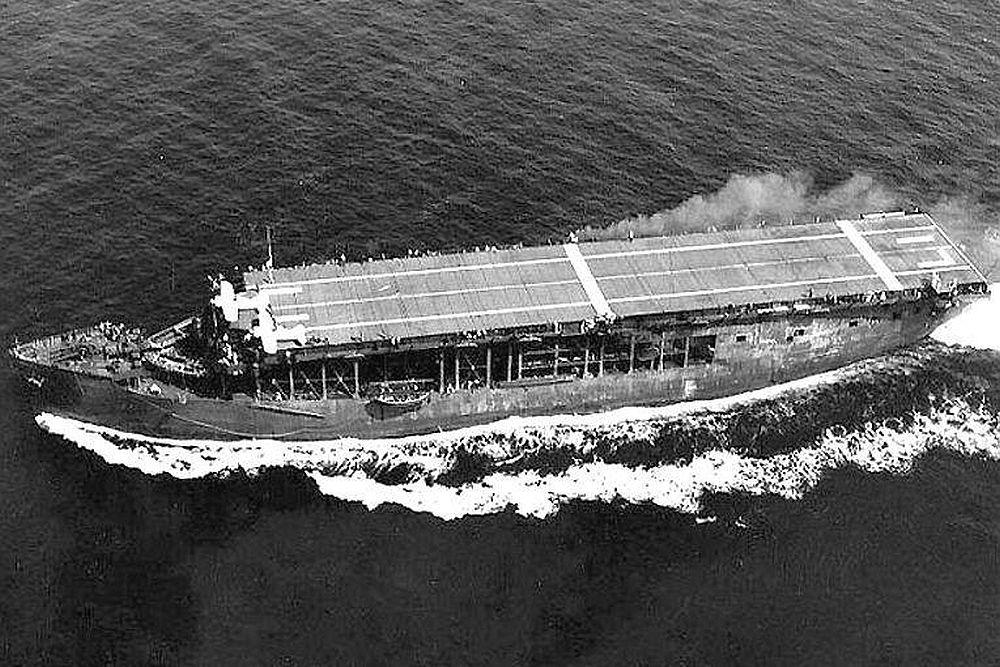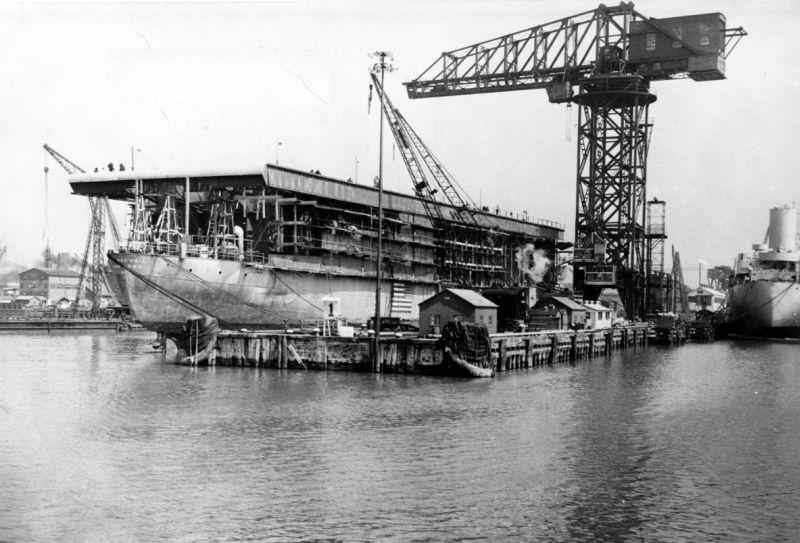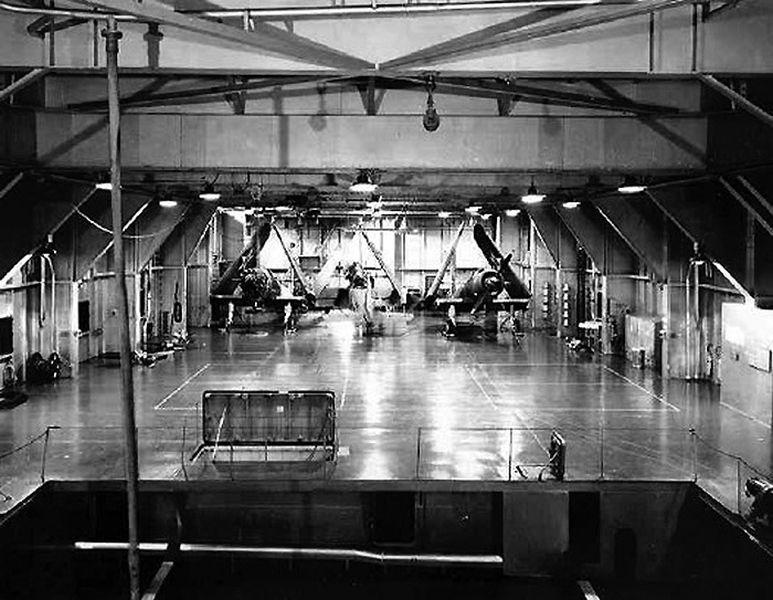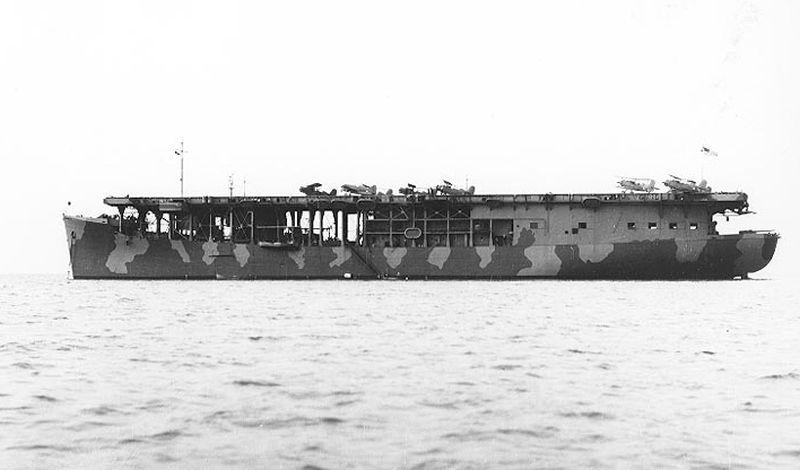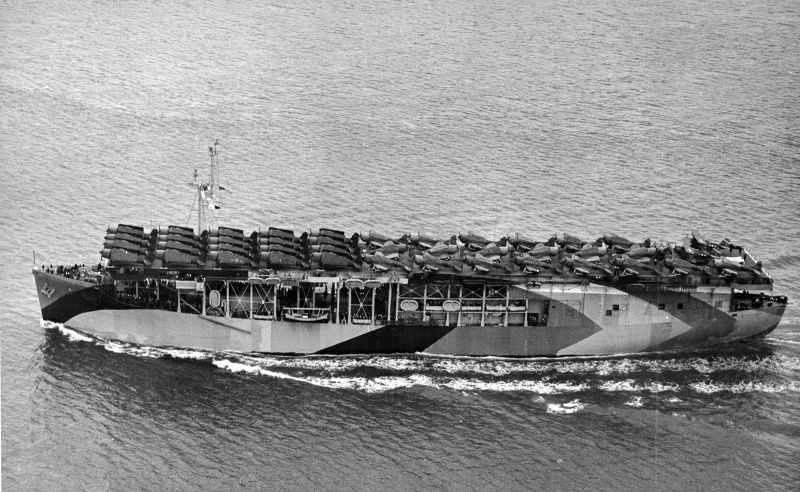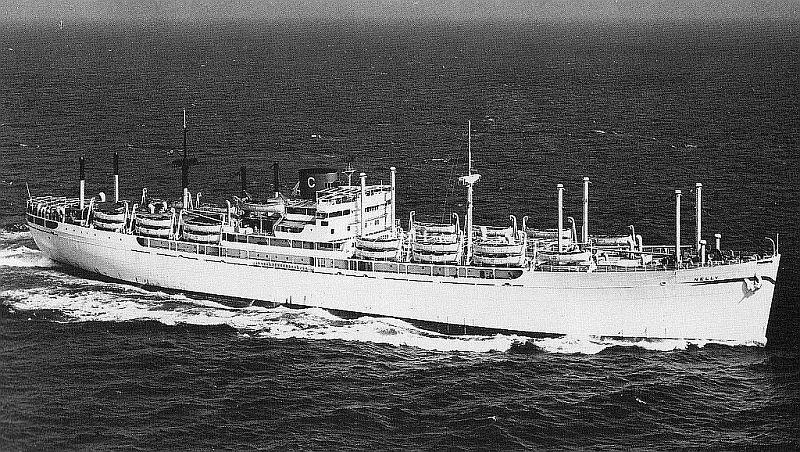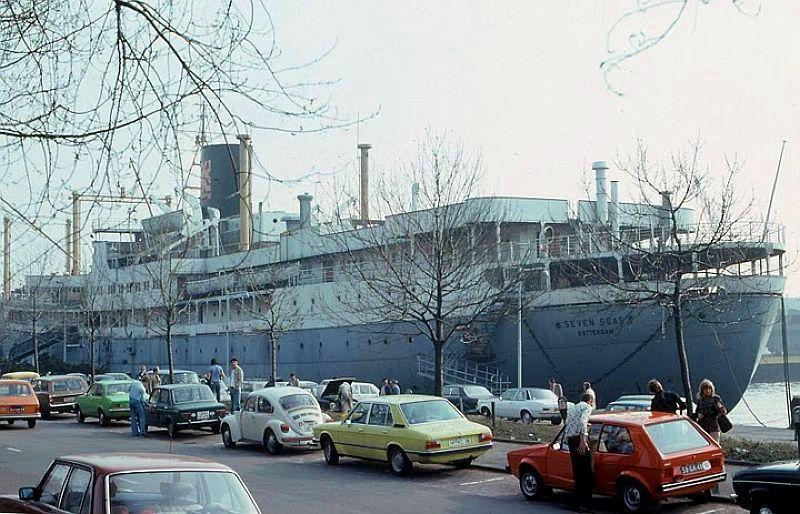Introduction
In the early years of the Second World War, and even prior to the USA itself joining this war, a huge demand for aircraft carriers stimulated a cost-effective alternative that could be delivered fast and in large numbers: the escort carrier converted from pre-selected hull structures of merchant vessels. This article focuses on the very first experiment of such a conversion: the USS Long Island. It describes the technical challenges of converting a merchant vessel into an escort carrier, the vessel's wartime exploits which illustrate the multi-purpose role of these type of vessels, and how she continued a rewarding civilian career soon after the war had ended.
History
In order to investigate the feasibility of converting a merchantman into an aircraft carrier, the US Navy decided to requisition a merchant ship. The choice fell on the motor vessel Mormacmail, which was in her completion phase. The ship was built under a US Maritime Commission contract by the Sun Shipbuilding & Drydock Company of Chester, Pennsylvania, for the Moore-McCormack Lines. On March 6, 1941, the Mormacmail was requisitioned by the US Navy and transferred to the Newport News Shipbuilding & Drydock Company in Newport News, Virginia, to be converted into an aircraft carrier. On June 2 of that same year, the ship was commissioned as USS Long Island by Commander Donald B. Duncan. The new ship was to be designated AVP-1 (Auxiliary Seaplane Tender) but was put into service as AVG-1 (Auxiliary Aircraft Ferry).
[img]27416[/img]In fact, the conversion of the Long Island had involved nothing more than mounting a 110 meter long flight deck on top of the original deck of the merchant navy type C3 vessel. The number originated from the US Maritime Commission’s classification scheme which previously had introduced the smaller and less powerful C1 and C2 types. Under the criteria of the C3, the ship was designed to propel a load of 12,193 to 13,209 tons at a speed of about sixteen knots with a single propeller, powered by a diesel engine and an overall length of about 150 meters. The USS Long Island’s displacement was much too small for a regular aircraft carrier and caused the vessel to be too high on the water, making it very unstable. The first in a long series of improvements consisted of installing a lot of permanent ballast tanks on the bottom of the hull. Furthermore, it soon became apparent that the small hangar merged too quickly into the slope of the ship's hull, so it was decided to install vertical supporting beams on the side walls of the aircraft storage facility. This also caused the ship to lie deeper and made it more stable and seaworthy.
Subsequent improvements to USS Long Island included lengthening of the flight deck, relocating the hydraulic catapult, modifying the layout of the hangar space, and better protecting the storage spaces by installing steel plating. The only hydraulic aircraft elevator, which was located in the centre of the flight deck, was also modernised. During the war, the on-board armament was expanded with several anti-aircraft machine guns.
Technical specifications
| Shipyard: | Sun Shipbuilding & Drydock Co. Chester, Pennsylvania |
| Converted by: | Newport News Shipbuilding & Drydock Co. Newport News, Virginia |
| Keel laid: | July 7, 1939 |
| Launched: | January 11, 1940 |
| Requisitioned by the US Navy: | March 6, 1940 |
| Commissioned: | June 2, 1941 |
| Overall length: | 141.7 meter |
| Flight deck: | 127.3 x 21.6 meter |
| Beam: | 21.18 meter |
| Draft: | 7.82 meter |
| Displacement (standard): | 7,886 tons |
| Displacement (fully loaded): | 13,500 tons |
| Installed power: | 4 x Busch-Sulzer diesel engines |
| Power output: | 8,500 shp |
| Propellers: | 1 |
| Bunkerage capacity: | 1,450 tons fuel oil |
| Maximum speed: | 16.5 knots |
| Complement: | 410 to 650 crew, excluding air group |
| Armament: | 1 x 13cm 38 calibre gun, 2 x1 7.6cm 50 calibre guns, 4 x 1 .50 machine guns |
| Armour: | None |
| Flight deck facilities: | 1 x centred hydraulic aircraft elevator, 1 x hydraulic catapult, 9 x arresting cables |
| Aircraft: | 16 to 24 Grumman F4F Wildcat fighters and Grumman TBF Avenger torpedo bombers |
| Hull numbers: | AVP-1, AVG-1 (as of June 2, 1941), ACV-1 (as of August 20, 1942), CVE-1 (as of July 15, 1943) |
Definitielijst
- torpedo
- A weapon of war. A cigar shaped body fitted with explosives and a propulsion and control mechanism. Intended to target after launch a nearby enemy ship and disable it by underwater explosion.
USS Long Island during the Second World War
During the months in-between USS Long Island's commissioning and the Japanese air attack on Pearl Harbor on December 7, 1941, the auxiliary carrier operated from the US Navy's largest naval base, Norfolk, Virginia. The operations mainly consisted of testing the small flight deck to demonstrate that a merchant ship converted into an auxiliary carrier could be of some use during war operations. The data collected by the Long Island crew and test pilots would contribute greatly to the war readiness of the later classes of escort carriers. Following the attack on Pearl Harbor, the United States was no longer neutral, and all possible means were used in the interest of the war efforts against both Nazi Germany and Japan. The experimental aircraft carrier USS Long Island was therefore also assigned war duties. In the first half of 1942, these mainly consisted of escort and training assignments. From May 10, 1942 onwards, the Long Island was temporarily assigned to Task Force 1 (TF 1), a squadron of seven battleships, commanded of Admiral William Pye, whose principal task was to protect the west coast of the United States.
On July 8, 1942, USS Long Island departed San Diego for Pearl Harbor where the auxiliary carrier arrived nine days later. After being used for some time as a training ship, the vessel mainly served as a transport ship for fighter aircraft. In August, the ship delivered 19 Grumman F4F Wildcat fighter aircraft and twelve Douglas SBD Dauntless dive bombers to Guadalcanal where they were stationed at Henderson Field airfield that had been captured from the Japanese a few days earlier. On August 20, 1942, USS Long Island arrived at Efate Island, New Hebrides, and was classified as ACV-1 (Auxiliary Aircraft Carrier).
On September 20, 1942, USS Long Island returned to the west coast of the United States and served for a year as a training ship for new pilots from its base in San Diego. On July 15, 1943, the ship was classified as CVE-1 (Escort Aircraft Carrier). During the final years of the war, the converted merchant ship mainly served as a transport vessel for aircraft from the American west coast to various islands in the Pacific. After VJ Day, the day Japan capitulated on August 15, 1945, the ship transported hundreds of American sailors and soldiers back to their homeland as part of Operation Magic Carpet.
Definitielijst
- Nazi
- Abbreviation of a national socialist.
- squadron
- A military unit in the Belgian navy usually six to eight small ships operating together under one command. The smallest military unit in the Dutch air force of about 350 men. In most countries is the designation of a military unit thesize of a company. It is either an independent unit, such as a battery, or part of a bigger Calvary unit. In the air force it is the designation of a unit of aircrafts.
USS Long Island after the Second World War
USS Long Island was decommissioned at the Puget Sound Naval Shipyard on March 26, 1946. On April 12, 1946, the ship was removed from the Naval Vessel Register and sold for scrapping twelve days later to the Zidell Ship Dismantling Company of Portland, Oregon. Instead of scrapping the ship, the Portland company auctioned her off to the Caribbean Land & Shipping Company, which had her converted into a freighter. In February, the vessel was renamed MS Nelly and placed under the Panamanian flag. The ship crossed the Atlantic Ocean for conversion into a migrant ship in La Spezia, Italy, where she was equipped with 1,300 berths in very basic dormitories and some double and quadruple cabins. The ship also had two dining rooms with long tables and several lounges. In June 1949, the Nelly made her first migrant journey from Italy to Australia. The migrant ship would eventually transport thousands of European emigrants down under. On the way back, the ship carried Dutch returnees from Java to Rotterdam. Furthermore, the vessel carried European emigrants to Canada several times.
In early 1953, the Nelly was converted into a luxury two-class passenger ship in Bremen, Germany, and renamed MS Seven Seas. The ship was chartered by the Europe-Canada Line, a joint venture of the Holland America Line and Royal Rotterdam Lloyd. The ship was mainly used by the Dutch shipping company to facilitate cheap transatlantic crossings for students and emigrants.
On Saturday, July 17, 1965, a fire broke out in the engine room of MS Seven Seas while the passenger ship was about 500 nautical miles from Newfoundland. The ship was towed to St. John's in Canada by the Dutch ocean tug Irish Sea and the US Coast Guard ship Absecon. After lengthy reparations, the ship was not active again until mid-1966. In September of that year, the Seven Seas was sold as student accommodation to the Rotterdam Student Lodging Company and moored near the Parkhaven in Rotterdam. In 1971, Verolme shipyard acquired the ship for use as accommodation for employees from Eastern Europe and the Middle East. In April 1977 the ship was sold for scrapping to the Van Heyghen Brothers in Ghent, Belgium.
Definitielijst
- mid
- Military intelligence service.
Epilogue
The USS Long Island, together with HMS Audacity, was in every respect the prototype of escort carriers of both the US Navy and the Royal Navy. The modifications necessary to convert a merchant ship into an auxiliary aircraft carrier were experimentally tested and applied by the Long Island and the Audacity. Full classes of escort carriers emerged from these experimental ships. These became the American Bogue-class and Charger-class and the British Avenger-class, Attacker-class and Ameer-class. All of them were built in the United States, but 34 of the 45 Bogue class ships built were transferred to the British under the Lend & Lease Act, as well as three of the four Charger class ships. The most important modification of the Bogue class compared to the USS Long Island was the replacement of the diesels with steam turbines.
The Royal Navy also received an experimental auxiliary aircraft carrier from the Americans to gain experience. The Royal Navy's findings would be shared with the US Navy and vice versa. This experiment also involved a converted C3 merchant ship. On March 6, 1941, the US Navy requisitioned not only the Mormacmail, but also the Mormacland, of which the body was fitted with a flight deck at Atlantic Basin Iron Works in Brooklyn, New York. The prototype was put into British service on November 17, 1941.
Information
- Article by:
- Peter Kimenai
- Translated by:
- Simon van der Meulen
- Published on:
- 18-01-2025
- Feedback?
- Send it!
Related books
Sources
- GREEN, M., Aircraft Carriers of the United States Navy, Pen & Sword Maritime, Barnsley, 2015.
- IRELAND, B., Vliegdekschepen, Veltman Uitgevers, Utrecht, 2007.
- LYON, H, Encyclopedie van de belangrijkste oorlogsschepen ter wereld, Scriptoria, Antwerpen, 1980.
- MCCURTIE, F.E., Jane`s Fighting Ships of World War II, Military Press, New York, 1989.
